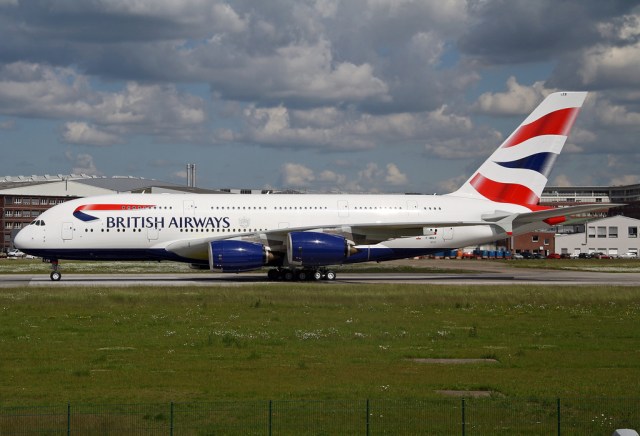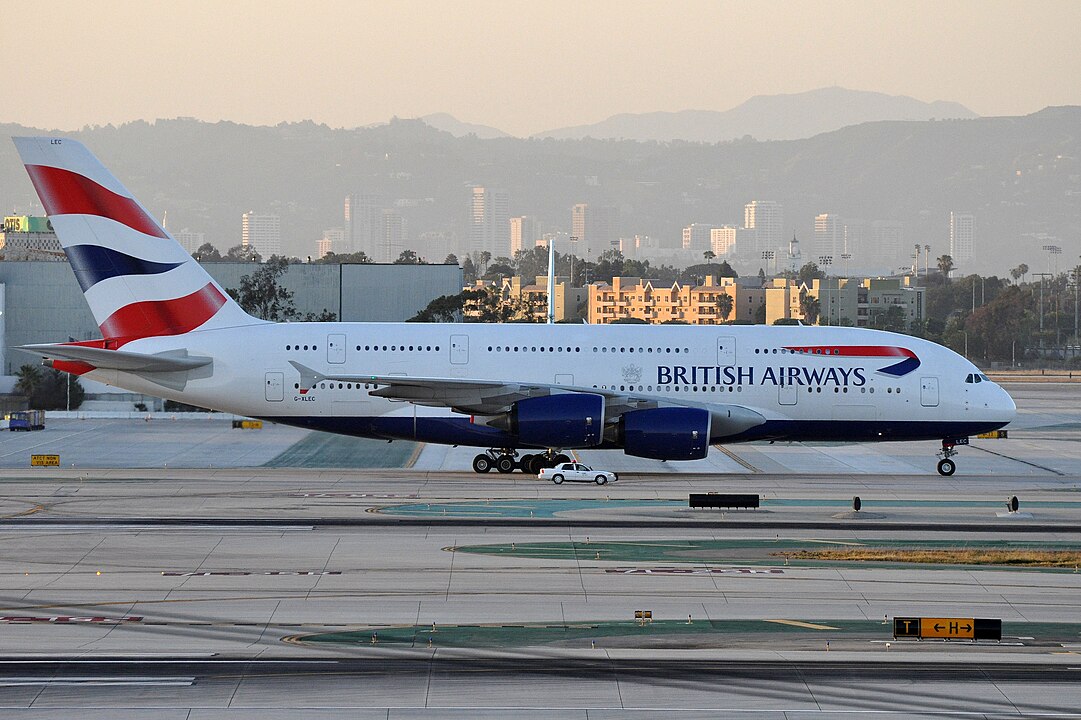
A British Airways Airbus A380 became stuck for nearly an hour at Boston Logan Airport on Friday afternoon after the pilots mistakenly took a wrong turn among the complex network of taxiways, ending up on one that was closed due to construction.
Flight BA213 had arrived in Boston following a six-and-a-half-hour flight from London. Despite landing ahead of schedule, passengers were left waiting on the double-deck aircraft as airport authorities figured out how to guide the plane back to the correct taxiway.
The eleven-year-old aircraft had landed on runway 4R and was instructed to taxi via N3, N, and then onto taxiway M before stopping short of runway 15L. However, the pilots accidentally crossed runway 22R and found themselves back on taxiway N, which at that point was closed for construction.

By the time the crew realized their mistake, there was no alternate route, and without the ability to reverse, the aircraft was stuck. It took around 45 minutes for airport authorities to bring a pushback tug, which towed the aircraft back to taxiway M. From there, the plane was able to proceed to the gate under its own power, and the incident concluded without further complications.
The error could prompt an investigation by the Federal Aviation Administration (FAA), as the aircraft crossed an active runway without clearance. Despite the delay, passengers may have been relieved that the flight made it at all, given British Airways’ recent struggles with its A380 fleet.

Alongside ongoing issues with the Rolls-Royce engines on its Boeing 787 Dreamliners, British Airways has faced rising maintenance challenges with its A380s, leading to frequent delays and cancellations. The airline’s A380s were grounded for several years during the pandemic, and long-term storage seems to have exacerbated engineering issues. The airline has cited industry-wide supply chain problems as the cause of these setbacks but remains committed to retrofitting its superjumbo fleet for continued service.
Featured image by Eric Salard
Despite the minor chaos caused by the wrong turn at Boston Logan Airport, the British Airways Airbus A380 incident ended without major issues, and passengers were able to disembark safely, albeit with some delay. However, this error highlights the complexity of taxiway navigation, especially at large airports with ongoing construction work.
The Federal Aviation Administration (FAA) may investigate this incident further, given that the aircraft inadvertently crossed an active runway without the necessary clearance. While the pilots’ error did not result in any safety incidents, the breach of runway protocols is a serious matter, particularly at busy airports like Logan, where traffic is frequent and mistakes could lead to significant safety risks.
This mishap comes at a time when British Airways is already grappling with operational challenges surrounding its wide-body aircraft fleet. The airline’s Airbus A380s, which were grounded for several years during the COVID-19 pandemic, have been facing increased maintenance difficulties since returning to service. Long-term storage, combined with industry-wide supply chain problems, has contributed to frequent delays and disruptions for British Airways’ superjumbo jets. These issues are compounded by the ongoing problems with Rolls-Royce engines on the airline’s Boeing 787 Dreamliners, which have also led to delays and cancellations.
British Airways has assured passengers and industry watchers that they are committed to retrofitting their A380 fleet, aiming to address the growing engineering challenges and enhance the aircraft’s long-term viability. The airline’s focus on improving the reliability of their superjumbos is essential, as the A380 continues to play a critical role in their long-haul network.
Despite these operational setbacks, British Airways remains determined to ensure that its fleet, including the Airbus A380, will continue to provide safe and efficient service to passengers worldwide. Whether this particular incident in Boston prompts changes in airport taxiway protocols or further scrutiny of the airline’s flight operations, it serves as a reminder of the intricacies and challenges involved in managing the world’s largest passenger aircraft.
Passengers affected by this incident might have been frustrated by the delay, but it was a relatively small blip in the grand scheme of air travel. For British Airways, however, it adds to the growing list of issues that need addressing in their post-pandemic recovery, as the airline strives to regain its full operational capacity and customer confidence.
